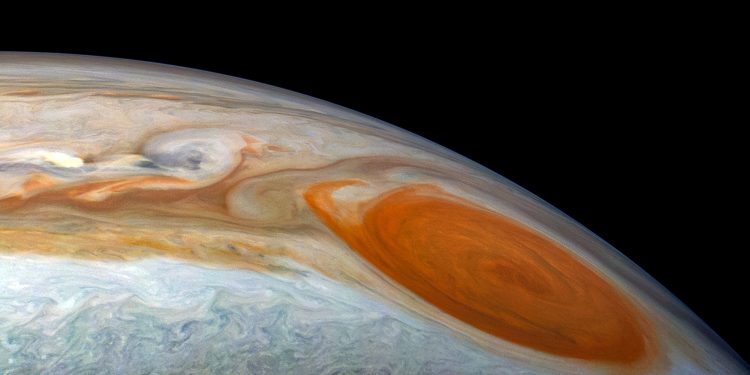For more than 150 years, astronomers have closely watched Jupiter’s Great Red Spot (GRS), a storm so large it could swallow Earth, yet new observations have revealed surprising changes in its size. Despite its longstanding presence, recent data from NASA’s Hubble Space Telescope show that the GRS is not as stable as it once appeared.
Over a 90-day period from December 2023 to March 2024, Hubble captured detailed images of the GRS that revealed an unexpected phenomenon—the storm’s size oscillates in a way that resembles the wobbling of gelatin. These observations, collected over time, have allowed scientists to create a time-lapse of the storm’s movements, offering an unprecedented look at its behavior.
Amy Simon, a researcher at NASA’s Goddard Space Flight Center, explained the discovery: “While we knew the storm’s movement shifted slightly east and west, we didn’t expect to see its size oscillating in this way. This is something we hadn’t observed before.” Her team’s findings were published in The Planetary Science Journal and shed new light on the storm’s dynamic nature.
Hubble’s High-Resolution Imaging Offers New Clues
Thanks to Hubble’s high-resolution capabilities, this is the first time astronomers have been able to observe the GRS with such clarity. Unlike past monitoring, which provided limited snapshots, this dedicated observation of the storm captured its day-to-day fluctuations. “With Hubble, we can definitively say that the GRS is expanding and contracting while simultaneously changing speed,” Simon said. “This kind of movement was completely unexpected.”
However, the reason behind this size oscillation remains a mystery. The team suspects that the storm’s interaction with Jupiter’s powerful jet streams may be responsible. These jet streams, which act as boundaries trapping the GRS at a specific latitude, exert pressure on the storm, causing it to change shape. Mike Wong, a co-investigator from the University of California, Berkeley, likened the phenomenon to an overstuffed sandwich, with the storm being squeezed from all sides.
This contrasts sharply with storms on other planets, like Neptune, where dark spots can drift across the atmosphere without being held in place by jet streams.
What the Future Holds for Jupiter’s Great Red Spot
Hubble’s observations are part of NASA’s broader Outer Planet Atmospheres Legacy (OPAL) program, which tracks atmospheric changes on Jupiter and other planets. Over the last decade, Simon and her team have watched the GRS steadily shrink. While the storm is still enormous, it has become less elongated over time, and the researchers predict it will continue to shrink until it reaches a more stable size.
“Right now, the GRS is overflowing its latitude band, but as it continues to shrink, it will settle into place within the jet streams, which will likely hold it more securely,” Simon added. The team expects the storm’s size to stabilize eventually, but at present, they have only observed one complete oscillation cycle.
Moving forward, Simon’s team hopes to gather more data that might explain the underlying cause of the storm’s oscillations. They are particularly interested in using future high-resolution images from Hubble to better understand the forces at work within Jupiter’s turbulent atmosphere.
Jupiter’s Great Red Spot isn’t just an interesting weather event—it serves as a window into broader atmospheric phenomena that could help scientists understand storms across our solar system and even on exoplanets orbiting distant stars. The knowledge gained from studying this storm could help us refine models for predicting weather patterns on other planets, offering insights that extend beyond Jupiter itself.











